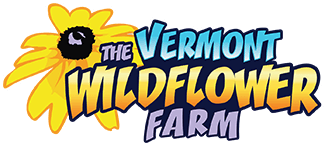Attracting Honey Bees to Your Gardens
Sometimes one looks around their garden and that ever pesty flying insect starts buzzing around your head. It's not always a bad insect; it could be a honeybee.
Honeybees are not usually aggressive, and they are one of those insects that help your garden. Honeybees are nature's pollinators! They increase the production of food crops and many different beautiful flowers and wildflowers in your garden.
Also, you may have wondered what honeybees might prey on or if they even do - the answer to that question is yes - they are a natural predator of things like lady bugs, soldier bugs and more!
Bees are among the most endearing and familiar of our insects. The sight and sound of bees droning methodically from flower to flower is a quintessential part of a summer's day. Sadly, changes to the farmed countryside have not been kind to our bumblebees. The reason that bees have declined in the countryside is simple. Bees feed exclusively on pollen and nectar, and there are far fewer flowers in the countryside than there once were. Wildflower gardens now provide a valuable flower-rich refuge in an impoverished landscape, and as a result have become a stronghold for many bee species.
A good first step in attracting honeybees is to provide a natural habitat for bees. You can do this by leaving a small pile of brush near the edge of your property or a stump or hollow log. Honeybees love these to construct a home for the winter. If you're brave enough put an old clay pot in your garden, they might just build a hive in it!
Plant a large variety of flowers that will attract the honeybees to your gardens. Honeybees prefer single petal blossoms like Poppies, Daisies, Black-eyed Susan, and Echinacea etc. Why do they prefer this? Because single petal flowers produce a lot more pollen and nectar than double or triple blossom flowers. Honeybees are foragers so they will buzz around your flowers collecting pollen with their legs. They then fly to another flower and the pollen rubs off and pollinates the new flower. Honeybees prefer blue, purple or yellow flowers. So, plant more of those in your garden. They prefer these flowers because the colors that honeybees see are green, blue, purple, yellow and black (believe it or not!)
You can add a large variety of all flowers to your garden as well but make sure that you have spring, summer and fall blooming flowers like our wildflower seed mixes provide, so that the bees are provided with nectar year-round.
Besides planting traditional wildflowers, you can also add more native wildflowers to your areas. Natives provide the bees with the most natural pollen and nectar that are available in your area. These native flowers were growing before folks started planting gardens, so they evolved with the honeybees in your area.
DO NOT USE PESTICIDES! They will kill the honeybees!!!!!!!
Another good idea is to use honeycomb frames. You can ask a local beekeeper for some. Place the frames near your gardens. This will attract the bees as they LOVE the honeycomb to snack on!
Honeybees are every gardener's best friend, so be kind to them! They pollinate not only your garden flowers but the flowers that produce fruit and vegetables that feed you and seeds to grow next year's crops! Be creative, the more plant diversity the more bees to your garden along with other beneficial wildlife and, lord knows that they all need a helping hand as many pollinators, wildlife and birds are losing their natural habitats to development!
Great Wildflowers or Mixes to Attract Honeybees are:
Native Perennial Pollinator Wildflower Mix
Species: Black-eyed Susan Gaillardia Poppies Daisies Echinacea Sages Cosmos Morning Glory Coreopsis Asters Sunflower Zinnias Love your honeybees, plant wildflowers!

